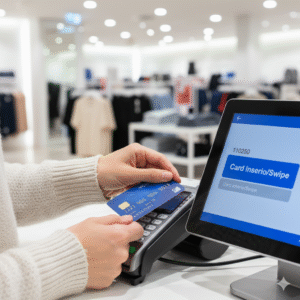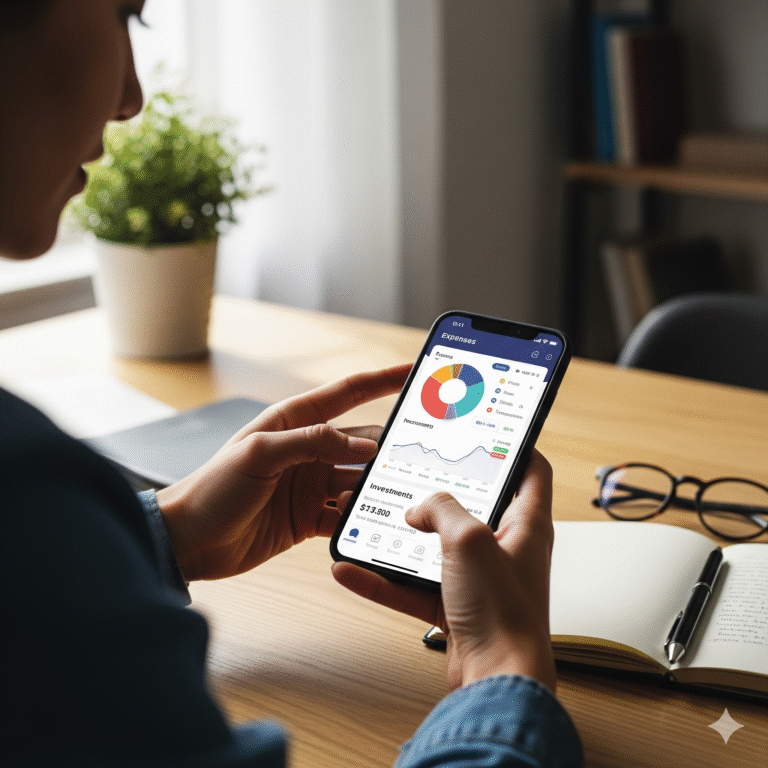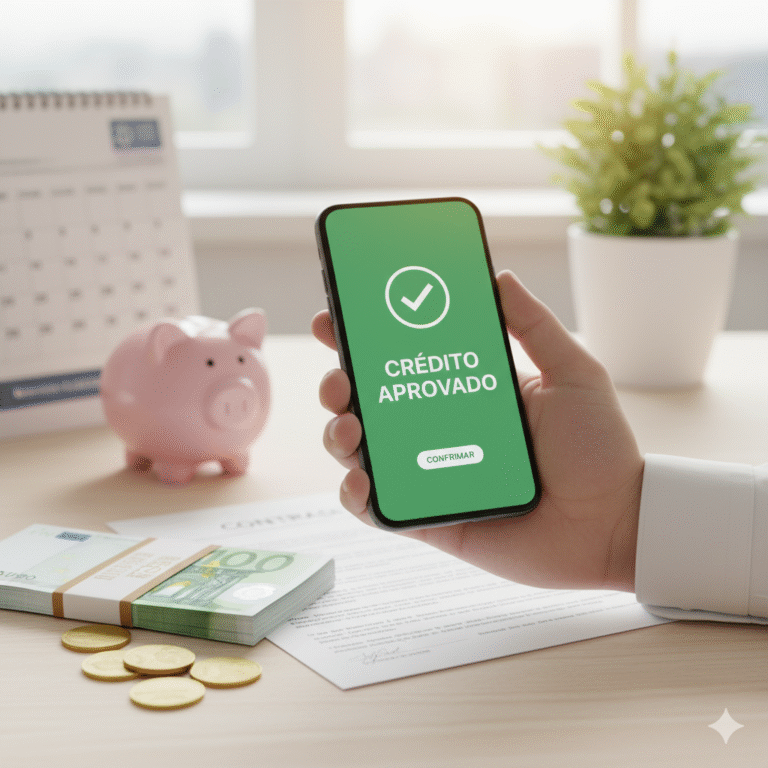Credit cards are one of the most common financial tools in the United States. They’re in our wallets, saved in our online shopping carts, and are a fundamental part of our economic lives. Yet, for many, the inner workings of a credit card remain a mystery. How does a simple swipe or tap instantly transfer money? Where does that money come from? And what’s the difference between paying the minimum and paying in full?
Understanding how credit cards work is the first and most critical step toward using them responsibly. When managed correctly, a credit card is an incredibly powerful tool for building your credit score, earning valuable rewards, and managing your cash flow. When misunderstood, it can become a fast track to high-interest debt.
This comprehensive guide will demystify the entire process. We’ll break down every component, from the key players involved in a single transaction to the complex terms on your monthly statement. By the end, you’ll have the knowledge and confidence to make your credit card work for you, not against you.
The 5 Key Players Behind Every Credit Card Transaction

When you use your credit card, it feels like a simple two-way interaction between you and the merchant. In reality, a complex ecosystem of five key players works together in seconds to make that transaction happen.
- The Cardholder: This is you—the person who owns the credit card and is authorized to use it to make purchases.
- The Merchant: This is the business where you’re making the purchase, whether it’s a local coffee shop or a large online retailer.
- The Acquiring Bank (or Merchant’s Bank): This financial institution provides the merchant with the technology (like the card reader or payment gateway) to accept credit card payments. They process the transaction on the merchant’s behalf and deposit the funds into their account.
- The Issuing Bank (or Your Bank): This is the bank or financial institution that issued you the credit card (e.g., Chase, Capital One, Citibank). They are essentially lending you the money to make the purchase and are responsible for billing you for it later.
- The Card Network: These are the technology companies that facilitate the communication between the acquiring and issuing banks. The most common networks are Visa, Mastercard, American Express, and Discover. They set the rules and provide the infrastructure for the transaction to be processed securely.
Understanding these roles is crucial because it clarifies that you are not paying the merchant directly. You are borrowing money from your issuing bank to pay the merchant, and the network makes sure everyone gets the right messages.
From Swipe to Statement: The Journey of a Single Transaction
What happens in the few seconds between when you swipe, tap, or click “buy” and when you see “Approved”? A sophisticated, high-speed process unfolds in the background.
Step 1: Authorization
- You present your card to the merchant.
- The merchant’s point-of-sale (POS) terminal sends your card information through the acquiring bank to the card network (e.g., Visa).
- The network routes the request to your issuing bank.
- Your issuing bank instantly checks your account to verify that you have enough available credit, that the card hasn’t been reported stolen, and that the transaction isn’t fraudulent.
- The issuing bank sends an “approved” or “declined” message back through the network to the merchant’s terminal. This entire process typically takes less than two seconds.
Step 2: Clearing and Settlement
- At the end of the business day, the merchant sends a batch of all their approved transactions to their acquiring bank.
- The acquiring bank sends this information to the card network, which then sorts the transactions and forwards them to the correct issuing banks.
- The issuing bank transfers the funds (minus a small fee) through the network to the acquiring bank, which then deposits the money into the merchant’s account. This part of the process is why it often takes a day or two for a transaction to move from “pending” to “posted” on your online statement.
Step 3: Billing
- Your issuing bank adds the transaction amount to your credit card balance.
- At the end of your billing cycle (usually about 30 days), the issuing bank sends you a bill, or statement, detailing all of your purchases and the total amount you owe.
Decoding Your Credit Card Statement: A Line-by-Line Breakdown

Your monthly statement is the single most important document for managing your credit card. It’s essential to read it carefully and understand what each term means.
- Statement Balance: This is the total amount you owe as of the statement closing date. To avoid paying any interest, you must pay this amount in full by the due date.
- Minimum Payment: This is the smallest amount your card issuer requires you to pay by the due date to keep your account in good standing. Warning: Paying only the minimum is a recipe for long-term debt, as interest will be charged on the remaining balance.
- Due Date: The deadline by which you must make at least the minimum payment to avoid a late fee and a negative mark on your credit report.
- Credit Limit: The maximum amount of money your issuing bank will let you borrow on that card.
- Available Credit: Your credit limit minus your current balance. This is how much you can still spend on the card.
- Transaction Summary: A detailed list of all purchases, payments, credits, and fees that occurred during the billing cycle.
The Grace Period: Your Secret Weapon for Avoiding Interest
The grace period is a crucial concept that every cardholder must understand. It is the period between the end of your billing cycle (the statement date) and your payment due date.
If you pay your entire statement balance in full by the due date, you will not be charged any interest on your purchases.
However, if you carry any portion of your balance past the due date, you typically lose the grace period. This means that not only will you be charged interest on the remaining balance, but new purchases will also start accruing interest from the day they are made. The only way to get your grace period back is to pay your entire balance (including the new interest charges) down to zero.
What is APR? Understanding the Cost of Borrowing
APR, or Annual Percentage Rate, is the interest rate you’re charged if you carry a balance on your credit card. It’s called “annual,” but credit card companies calculate and compound interest daily. This means that each day, interest is calculated on your balance, and that interest is then added to the balance for the next day’s calculation. This is why credit card debt can grow so quickly.
You’ll often see several different APRs on your card agreement:
- Purchase APR: The standard rate applied to your purchases.
- Cash Advance APR: A much higher interest rate applied when you use your card to withdraw cash from an ATM. There is typically no grace period for cash advances.
- Penalty APR: An extremely high interest rate that can be triggered if you make a late payment or violate the card’s terms.
The best way to manage APR is to make it irrelevant by paying your statement balance in full every month.
Credit Cards vs. Debit Cards: Knowing the Crucial Differences
While they may look the same, credit and debit cards function in fundamentally different ways.
| Feature | Credit Card | Debit Card |
| Source of Funds | A line of credit (a loan) from an issuing bank. | Your own money, directly from your checking account. |
| Impact on Credit | Directly builds your credit history when used responsibly. | Has no impact on your credit score. |
| Fraud Protection | Excellent. Under federal law, your liability for fraudulent charges is capped at $50, and most major issuers offer $0 liability. The money stolen is the bank’s, not yours. | Good, but weaker. The money stolen is your own. It can take days or weeks for your bank to investigate and return your funds, which can be a major issue if you have bills to pay. |
| Rewards & Perks | Often come with robust rewards programs (cash back, miles, points) and benefits like travel insurance or extended warranties. | Typically offer few or no rewards. |
While debit cards are great for controlling spending, credit cards offer superior fraud protection and are essential for building the credit history you’ll need for major life events like getting a car loan or a mortgage.
Maximizing Benefits and Avoiding the Pitfalls of Credit
Credit cards are a double-edged sword. Used wisely, they offer incredible benefits. Used carelessly, they create significant financial problems.
The Benefits (The Upside):
- Building Credit: This is the most important benefit. Responsible use is the primary way to build a strong credit score.
- Rewards: Earning cash back, travel points, or other rewards on purchases you were going to make anyway is like getting a discount on everything.
- Security: Strong fraud protection means you can shop online and in-person with greater peace of mind.
- Emergency Fund: A credit card can be a crucial safety net for unexpected expenses when your cash reserves are low.
The Risks (The Downside):
- The Potential for Debt: The ease of swiping can lead to overspending and accumulating a balance you can’t pay off.
- High-Interest Rates: Carrying a balance is incredibly expensive due to compounding interest.
- Fees: Annual fees, late fees, and other charges can add up if you’re not careful.
- Credit Damage: Late payments and high balances will damage your credit score, making it harder to get loans in the future.
You Are in Control of Your Financial Future

A credit card is not free money; it is a financial tool. Like any tool, its value depends entirely on the person using it. Now that you understand the players, the process, and the terminology, you are no longer a passive consumer. You are an informed cardholder, capable of making smart, strategic decisions.
The path to financial health is paved with knowledge and discipline. Pay your balance in full and on time, every single time. Monitor your statements, leverage your rewards, and treat your credit limit with respect. By doing so, you will build an excellent credit history, unlock financial opportunities, and ensure that your credit card remains a powerful asset on your journey to wealth and security.







